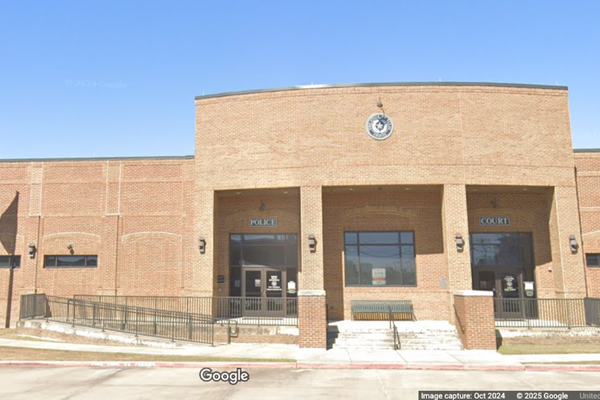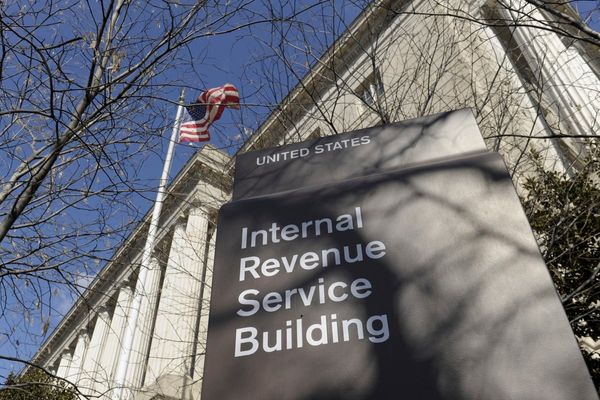/https://static.texastribune.org/media/files/ab7acf273cbbd2e6c397740f1c5bde58/0420%20Light%20Bill%20RS%2001%20TT.jpg)
Subscribe to The Y’all — a weekly dispatch about the people, places and policies defining Texas, produced by Texas Tribune journalists living in communities across the state.
MIDLAND — Mary Ann Estrella sat on a rented couch last November and ate, by candlelight, her Thanksgiving Dinner: a bologna sandwich.
The lit candles were not for ambiance. They were, for the time being, her only source of light.
She was four months behind on her electricity bill, owing $450. With little money left over from her income — a combined $2,000 among Social Security, medical and disability benefits — the 65-year-old veteran had to choose between paying for groceries and the electric bill.
“I just didn't have the money to pay for it,” Estrella said.
This has been Estrella’s reality since moving to Midland, the capital of the oil-rich Permian Basin, three years ago to help her son, Frankie Estrella, raise his newborn.
It’s also the reality for thousands of Texans who cannot keep up with the costs of their electric bills.
A recent survey of Texans by Payless Power, a Dallas-based utility company, found that one third of Texans said they paid their electric bills late at least once during the year. And 7% self-reported that their accounts had been referred to a collections agency.
Texans also self-reported that months of extreme weather made it more difficult to pay their power bills.
“It’s not a surprise,” said Doug Hairgrove, director of energy programs at the Community Action Corporation of South Texas, an organization providing social, health and financial services to 8,000 households across 16 counties in South Texas, including Hidalgo, Cameron, Nueces and Starr counties. On average, the partnership helps 1,000 people a year with their electric bills. Households on average have owed $1,400, Hairgrove said.
The partnership has already received 52,000 phone calls this year seeking some form of financial relief.
/https://static.texastribune.org/media/files/dcfd2fd9950fb71e84e5990714512af2/0420%20Light%20Bill%20RS%2017.jpg)
“It's ironic because Texas is supposed to be an energy state. But I do think we kind of get the short end of the stick,” Hairgrove said.
Texas is one of about two dozen states that have a so-called deregulated energy market. It was, at the time when Texas lawmakers established it, pitched as a way to lower electricity bills.
Today, Texas homes are powered by the Electric Reliability Council of Texas, a board-governed nonprofit with two functions.
The first is overseeing the grid, which manages 90% of the state’s electricity and serves about 26 million Texans. The grid obtains power from many sources, including oil and natural gas, coal, wind, and solar. Recently, the grid has also introduced batteries.
ERCOT also buys that power from producers and resells it to companies that then sell it as a utility to consumers. Transmission and distribution companies, like Oncor and CenterPoint Energy, deliver that electricity, for which Texas customers also pay a fee. ERCOT relies on generator operators and a computer algorithm to determine the prices.
“ERCOT is the one buyer in the wholesale market and the one seller,” said Ed Hirs, an energy fellow at the University of Houston. Hirs said that the power plants feeding ERCOT’s grid only make money when they generate electricity.
ERCOT’s system attempts to provide incentives to power companies to produce more energy during peak demand times in the summer and winter by paying a premium. Those price increases are passed on to the utility companies and their customers.
For example, Texans felt the brunt of the rate hikes during Winter Storm Uri in 2021, when the wholesale price of a kilowatt hour rose a staggering 7,400% to $9 from the normal 12 cents per kilowatt-hour.
/https://static.texastribune.org/media/files/61965fd2fd1ae03f723ee94761711476/0420%20Light%20Bill%20RS%2023.jpg)
In 2023, Texas paid more for wholesale electricity than anywhere else in the country, Forbes reported using data from the Energy Information Administration.
A spokesperson for ERCOT said it is not responsible for how much electric retailers charge their customers. When the demand on the grid outweighs the amount of electricity the sources of power can generate, “the wholesale cost of energy could increase as more expensive generation would be required” to keep up, they said.
“ERCOT does not design the market or set pricing for retail consumers,” the spokesperson said.
Hirs said the existing generators cannot produce enough electricity to match the state’s growing population and keep costs low.
“The fact of the matter is we don't have enough batteries, and we don't have enough nuclear, coal, and natural gas fleets to serve Texans on peak demand days,” he said.
Hirs said he believes renewable energy could ease that burden at some point, but the existing plants will not be capable of meeting demand, he said. Meanwhile, lawmakers have attempted to encourage natural gas development.
Also last fall, lawmakers passed a bill allowing transmission and distribution companies to request changes in how much they charge for electricity to recover the cost of providing it. The Public Utilities Commission would approve or deny those requests.
State Sen. Phil King, R-Weatherford, sponsored the bill, enacted in September 2023. The commission has received nine requests from companies delivering electricity to raise prices to cover distribution costs. It approved six: AEP Texas, Southwestern Electric Power Company, Oncor Electric Delivery Company and CenterPoint Energy Houston Electric — the only regulated companies in Texas’ energy market — requested the increase in costs.
When families find themselves in a precarious financial position, they often wait until they are at a breaking point, said Sara Aguilar, executive director of Odessa Catholic Charities.
“People are ashamed and embarrassed to ask for help,” Aguilar said.
That’s how Judy Ann Marquez felt when financial instability arrived at her doorstep. Last year in October, the 62-year-old took custody of her niece’s child, whose parents were unable to do so. Marquez said she quit her job as a cashier when her employer reduced her hours. She scraped her savings while looking for another job, she said.
Her power hadn’t been shut off, but it was close. The bill had soared to $500, an amount she couldn’t afford. It was then that Marquez sought out the charity for help. The charity paid the bill in full. “I hate asking, but I don’t have a choice,” Marquez, a lifelong Odessan, said.
/https://static.texastribune.org/media/files/3e7db0258c1ab1270b7871dfdc41d086/0420%20Light%20Bill%20RS%2018%20TT.jpg)
Aguilar said the charity provides monetary assistance for up to three months and pairs a caseworker with each person. The caseworker equips every person with financial literacy skills tailored to their hardship.
If those seeking assistance can afford part of the expense, the organization asks every person to contribute. After the three-month period expires, the person can again request assistance in 18 months.
“It just helps them be part of the solution,” she said.
Texans who cannot pay their bills can also apply to the Comprehensive Energy Assistance Program or CEAP. This program assists low-income households by covering up to eight months of the highest energy bills. To qualify, families must fall below 150% of the Federal Poverty Guidelines. A household of one, for example, must earn no more than $22,590 annually.
In Midland, Estrella is counting the days until she can buy a home. It’s a sunny afternoon in mid-April, and she’s out of cash until the end of the month when her benefits kick in. She would work more, she said, but has to limit her hours to avoid being disqualified from her benefits.
She’s learned how to conserve energy from a local charity and is working with a loan counselor to get her finances back on track. Sometimes, she gets meals from the local food bank and spends less on groceries, she said. These are some of the programs that keep her afloat — and the lights on.
Disclosure: CenterPoint Energy, Oncor and University of Houston have been financial supporters of The Texas Tribune, a nonprofit, nonpartisan news organization that is funded in part by donations from members, foundations and corporate sponsors. Financial supporters play no role in the Tribune's journalism. Find a complete list of them here.
We’ve got big things in store for you at The Texas Tribune Festival, happening Sept. 5–7 in downtown Austin. Join us for three days of big, bold conversations about politics, public policy and the day’s news.







